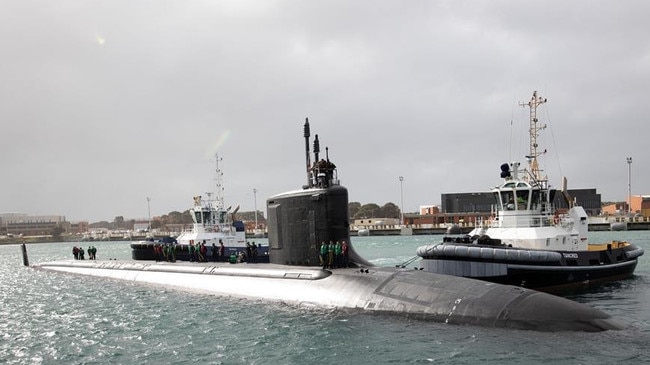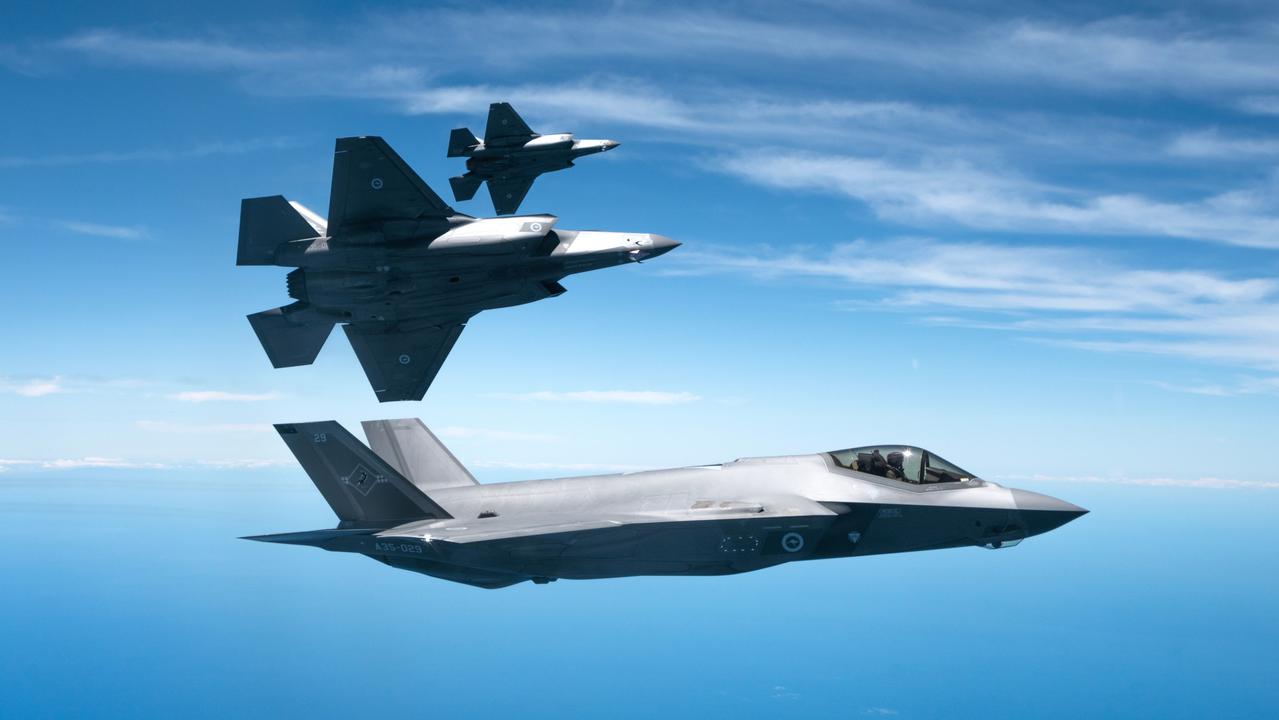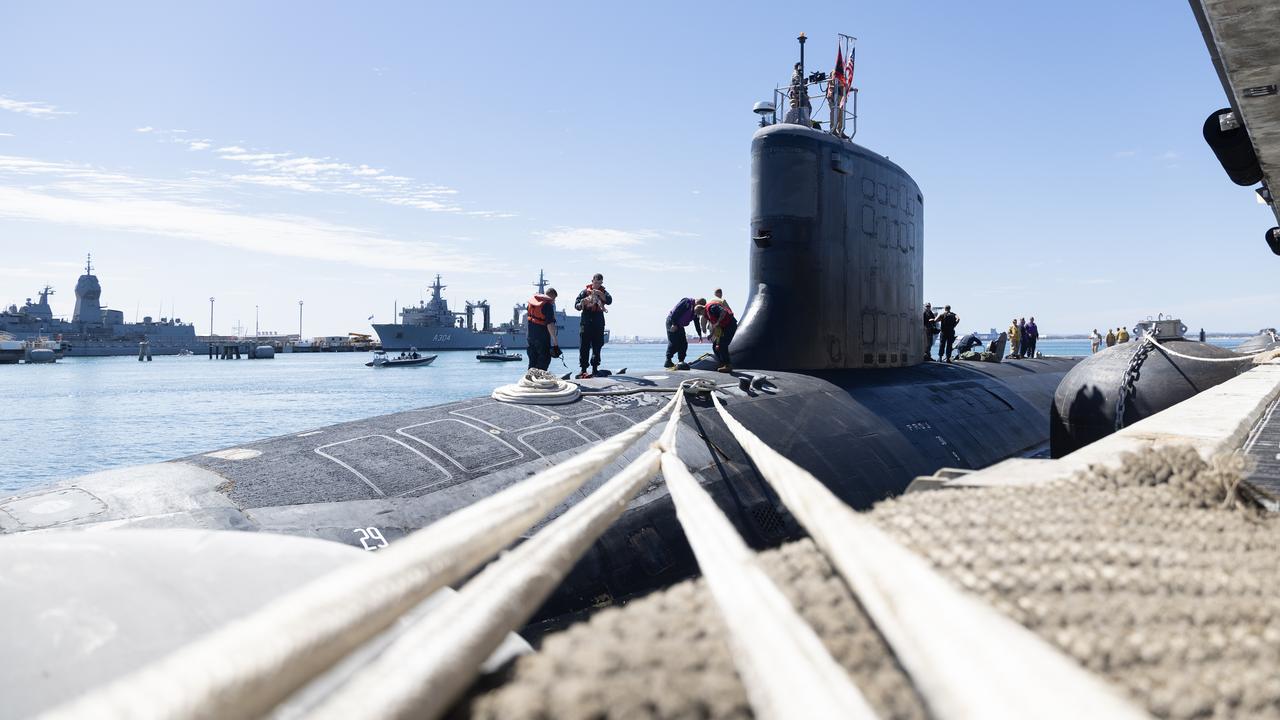AUKUS nuclear submarines will also be a game-changer for the army
The Australian Army will need to be able to conduct special operations with submarine support in our region – as we did in the Pacific War.

Climbing down into the belly of the nuclear-powered submarine USS Hawaii last month, two things became clear.
First, AUKUS is on the move. USS Hawaii’s visit to HMAS Stirling marks the first time Australia has provided maintenance to a nuclear submarine. It’s among the first of many steps towards Pillar I.
Second, these nuclear submarines are every bit about winning wars on land, as well as at sea.
Alongside USS Hawaii lay the submarine tender USS Emory S. Land – a supply ship filled with everything that an apex predator needs for operations in the ocean depths. And for projecting force on land, as I was to learn.
On both vessels were young Australians – officers and sailors of the Royal Australian Navy, welcomed into the ship’s company and living at the leading edge of the AUKUS enterprise. I was proud to see our sailors bringing this historic agreement to life at the pointy end of our alliance.

AUKUS is coming to life. You can see it with your own eyes. HMAS Stirling is growing with new buildings and infrastructure. Recruiters are chasing the tradies who will harden our industry and supply chains. People are shifting their lives to Perth.
But onboard the USS Hawaii I was reminded that AUKUS is not only about submarines. In the torpedo room, the captain showed me the bunks that can house a platoon of US Navy SEALs, with space for all their equipment and weapons. Then to the lockout chamber, where special operators begin their insertion to the flashpoints of the land domain.
Our future RAN submarines will come with the same capabilities. Given our long coasts, and the island chains that surround us, the Australian Army will need to be able to conduct special operations with submarine support in our region – as we did in the Pacific War with our Z Special Units.
My immediate thought was of the Special Air Service Regiment, just 60 minutes up the coast at the Campbell Barracks. And the need for the Australian Army to grow this capability over the coming years.
If so, why not learn from the experts? Indeed, why not have a US Navy SEAL presence as part of Submarine Rotational Force – West from 2027?
Campbell Barracks in Swanbourne is a world-class facility with room to host important allies like our US and UK counterparts.
AUKUS is a framework that can drive tactical innovation in parallel with its strategic imperatives. We must not allow it to become an intellectual straitjacket and narrow our thinking to strictly naval categories.
We know the course that has been set for Pillar 1, and we have clear timelines and benchmarks for Australia operating sovereign nuclear submarines.
The course for Pillar 2 is yet to be clearly defined, and therein lies a massive opportunity for the Australian Army as we grapple with future threats.
Distant wars in Europe and the Middle East herald warnings about what is coming to our region. Our challenge is to shape and build our land combat power with the fresh lessons from the war in Europe.
Doctrines we developed in Iraq and Afghanistan are dangerously stale and inadequate. Meanwhile, the character of war has morphed like a shape-shifter.
Soldiers now face a meat-grinder where the massing and swarming of low-cost weapons has created a cold arithmetic of attrition.
As we look at AUKUS Pillar 2, we must focus on adapting the Australian Defence Force and our partners to this new reality.
The war in Ukraine, especially, has unveiled a violent paradox. Haunted trenches remind us of World War I, while digital capabilities bring us closer to dystopian science fiction.
This new war, like the Roman god Janus, has two faces.
The first face we’ve seen before, at the Western Front. At places like Verdun in 1916, where German general Eric von Falkenhayn aimed to “bleed France white”. In a return to history, industrial might matters once more. Perhaps the brutal truth facing Australia is that it has always mattered.
But we also see a new, hi-tech face of war. Its algorithms take down power stations and its radio waves immobilise armies. Its cheap drones deliver death strokes to men and machines in real-time, high-definition footage. It has an ugly, medieval aspect to it.
This two-faced war is much closer to us than our newsfeeds suggest, as our American friends warned us in July.
The Commission on the National Defence Strategy told us that: “Lessons from the Ukraine war demonstrate that the US Army needs to expand its force structure in key areas – particularly air defence, counter-unmanned aerial systems, electronic warfare and long-range fires – that are applicable across theatres, including in a Western Pacific contingency.”
Of course, when it says these weapons and technologies are needed for the Western Pacific, they mean our front yard. In the littoral and archipelagic geography that surrounds Australia.
Take heart. We already manufacture many of the capabilities the Americans mentioned. Several have proven themselves on the battlefields in Kursk and Donetsk.
It’s a start. And if we look beyond the submarines, we’ll see AUKUS provides opportunities for army to access these vital capabilities that have emerged in the past few years. Pillar 2 makes it entirely possible. And necessary. For we must give our warfighters military advantages on land, as well as at sea, if we are to win this war with two faces.
-
Andrew Hastie is the opposition spokesman for defence, defence personnel and defence industry.



To join the conversation, please log in. Don't have an account? Register
Join the conversation, you are commenting as Logout